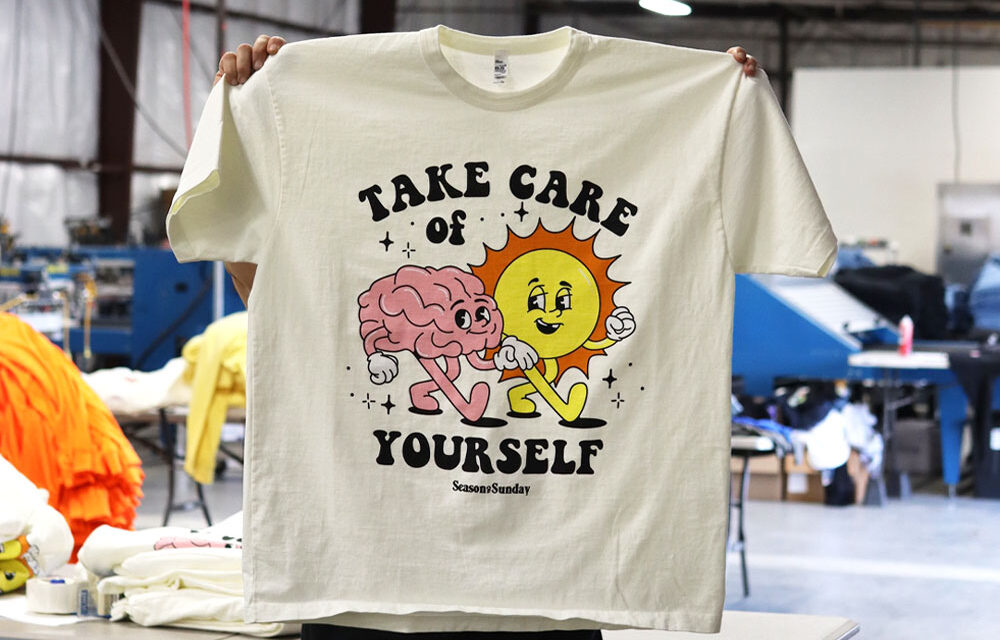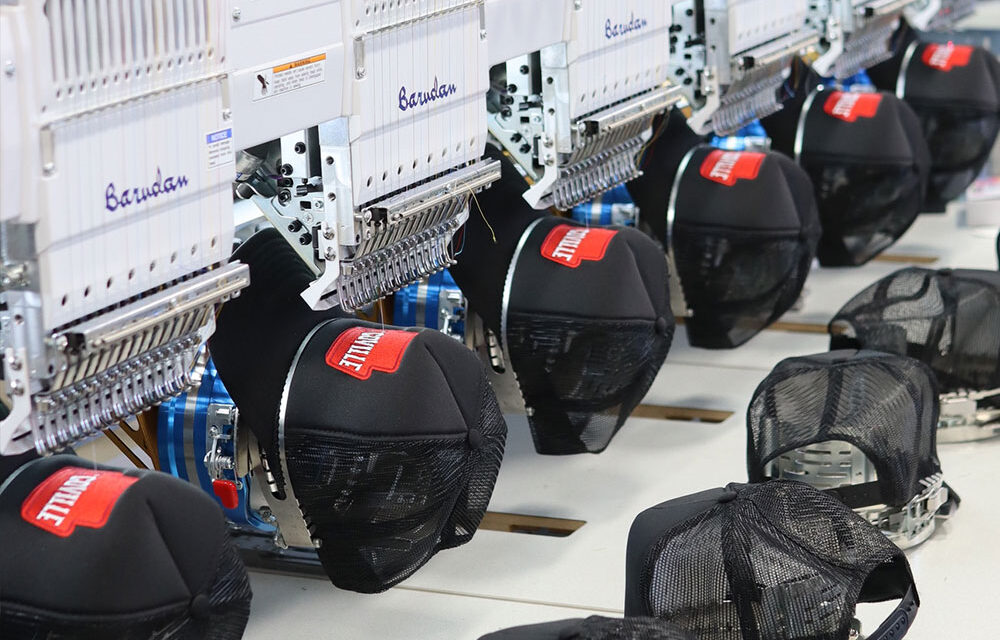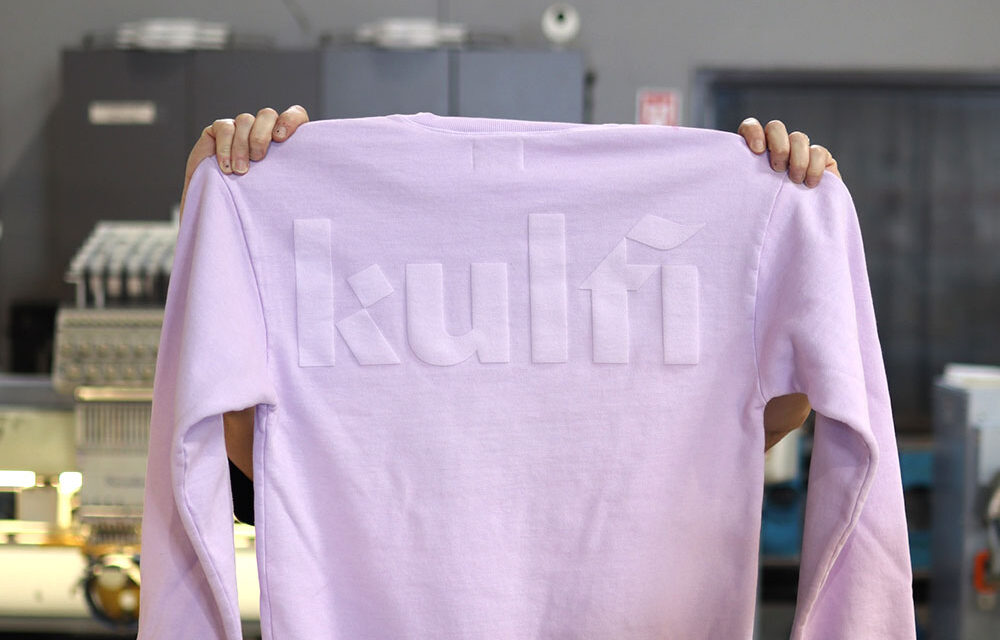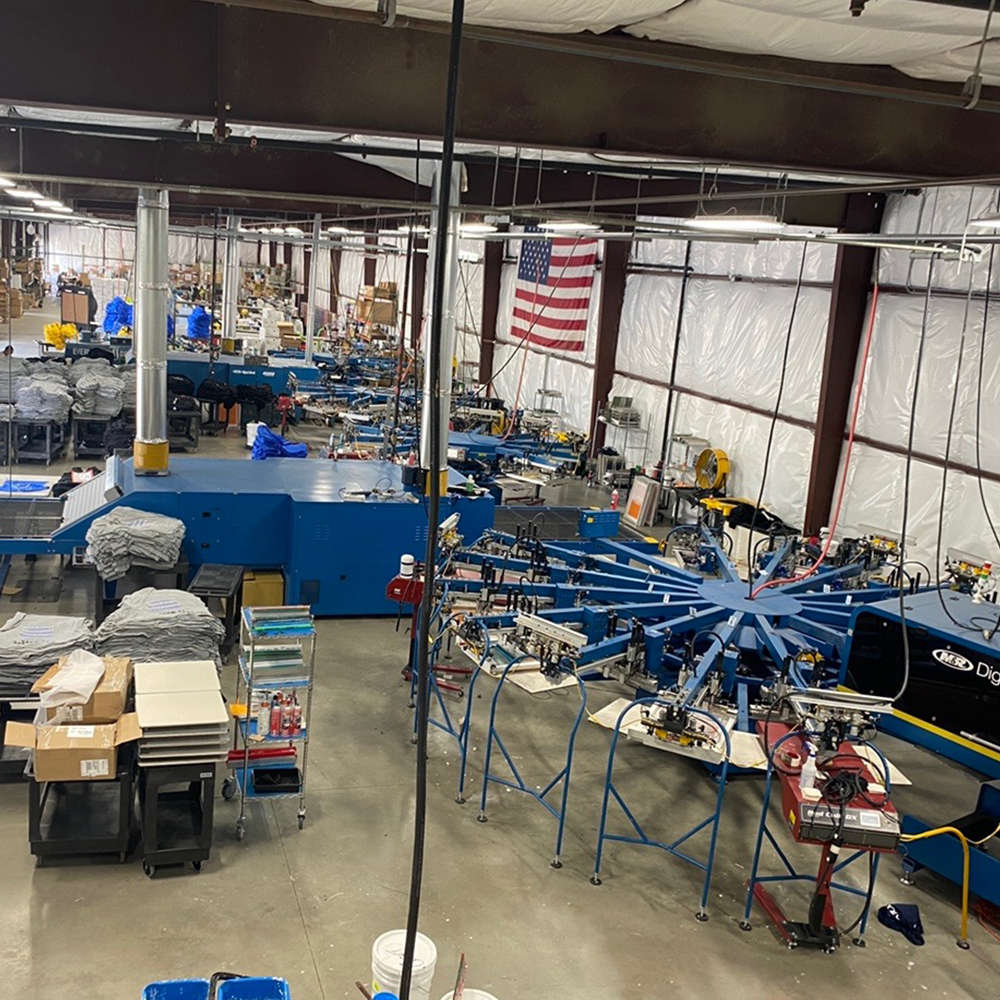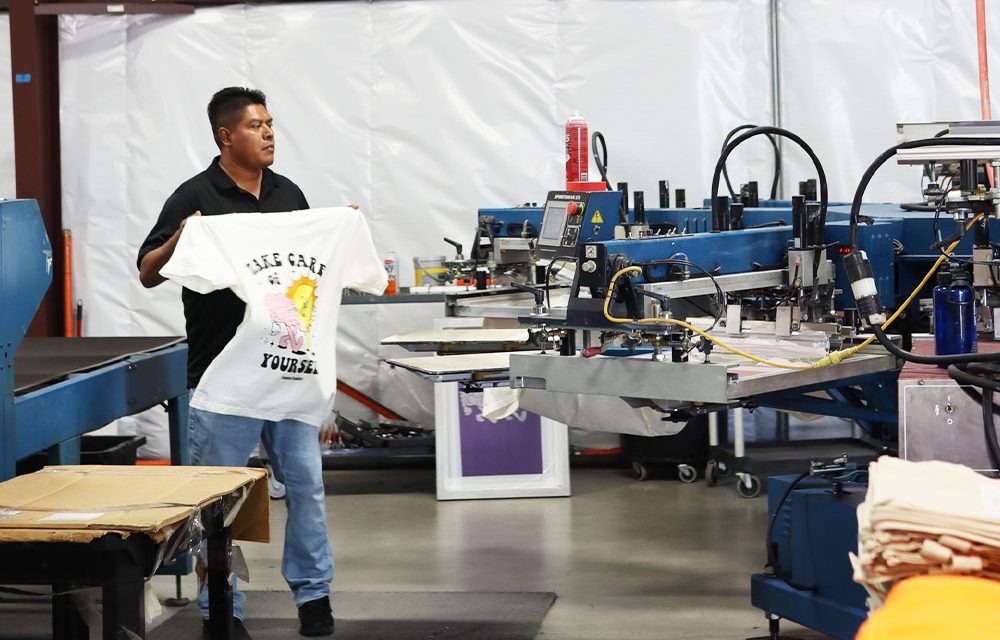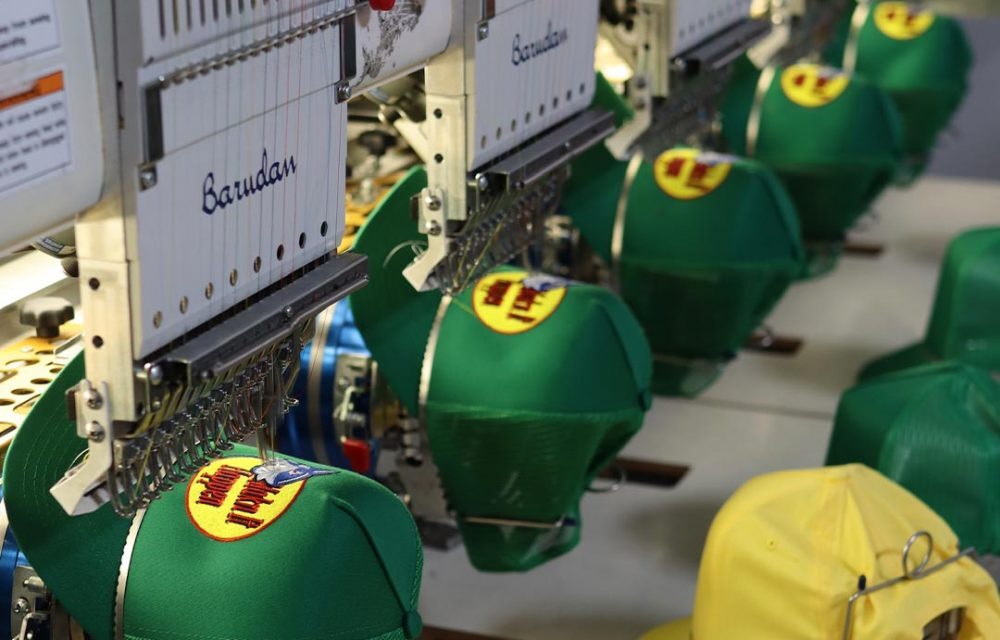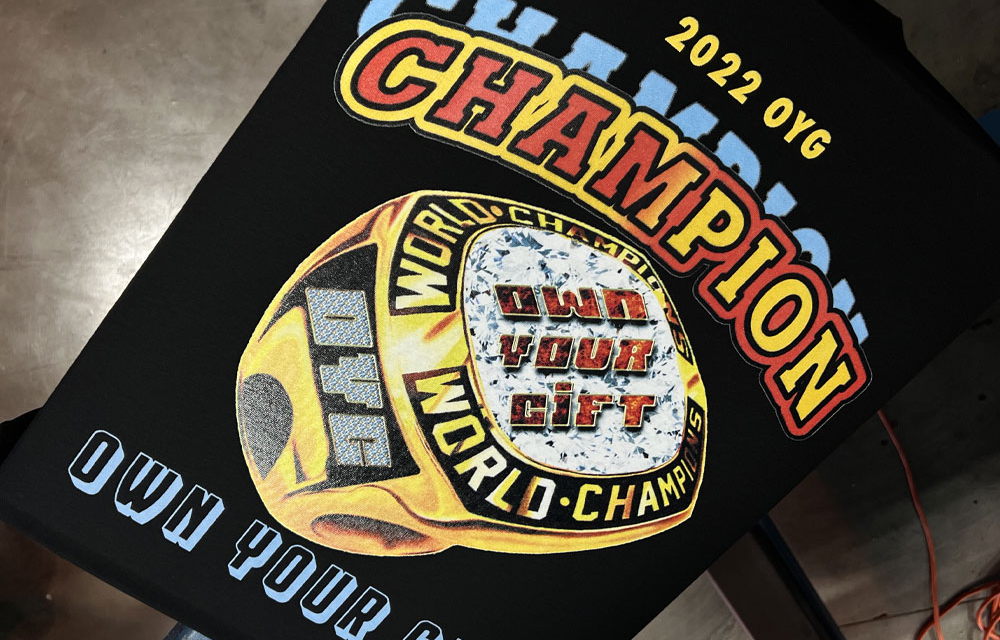Comprehensive Overview of Shirt Printing Techniques
Shirt printing techniques have significantly evolved, offering a myriad of options like screen printing, direct to garment printing, heat transfer printing, dye sublimation, vinyl cut printing, and embroidery. Each method carries unique benefits and drawbacks, making the choice of printing technique crucial based on the desired outcome. The focus of this comprehensive overview is on screen printing and direct to garment printing, two of the most popular techniques. These techniques are often used in conjunction with graphic design and logo design to create custom apparel. Screen printing, a traditional method, is known for its affordability and versatility, while direct to garment printing, a more modern technique, is lauded for its precision and flexibility. Understanding these techniques, their pros and cons, can help businesses make informed decisions about their shirt printing needs, whether they require block print or digital printing.

Screen Printing: Pros and Cons
Screen printing, also known as silk screening, is a traditional shirt printing technique that has been in use for centuries. It involves creating a stencil, known as a screen, and then using that screen to apply layers of ink onto the printing surface. This process is repeated with different screens to achieve multi-colored designs. The durability and vibrancy of screen printing make it a preferred choice for large-scale projects. However, screen printing is not without its drawbacks. The process is labor-intensive and time-consuming, particularly for designs with multiple colors. Additionally, the initial setup cost for screen printing is high, making it less cost-effective for small orders. It is also worth noting that screen printing is not suitable for highly detailed designs due to the limitations of the stencil method. Despite these drawbacks, screen printing remains a popular choice for its durability and color vibrancy. It is an excellent choice for large orders and simple designs, and it works well on a variety of fabric types. Its longevity and resistance to wear and tear make it a go-to choice for many businesses.

Direct to Garment (DTG) Printing: A Good Choice?
Direct to Garment (DTG) printing is a relatively new shirt printing technique that uses a specialized printer to apply ink directly onto the fabric. This technique allows for high-resolution prints and a wide range of colors, making it ideal for detailed and complex designs. DTG printing is highly flexible, allowing for customization and small batch printing at a reasonable cost. However, DTG printing also has its downsides. The print is less durable than screen printing and may fade over time, especially with frequent washing. Furthermore, DTG printing is slower than screen printing, making it less suitable for large orders. The cost per unit is also higher with DTG printing, particularly for large, multi-colored designs. Despite these limitations, DTG printing offers significant advantages. The ability to print highly detailed designs with a wide range of colors makes it a preferred choice for many businesses. Furthermore, the flexibility and customization options offered by DTG printing make it an excellent choice for small batch orders and unique designs.

Heat Transfer Printing: How Does It Work?
Heat transfer printing is a subset of digital printing technologies that has transformed the way designs are imprinted on various materials. The process involves first printing a design onto a heat transfer paper using a digital printer. This design, which could be a logo design or a graphic design, is then transferred onto the product using a heat press. The heat causes the inks on the transfer paper to sublimate, permeating the product’s surface to create a durable print. This method of heat transfer printing is highly versatile and can be applied to a variety of materials, including fabrics, ceramics, and plastics. Its popularity in the textile industry is due to its ability to produce high-quality prints on t-shirts, hats, and other apparel. The process is quicker and easier than traditional methods like screen printing or embroidery, making it a cost-effective option for businesses of all sizes. However, heat transfer printing is not without its limitations. It is not suitable for products that cannot withstand high temperatures. The quality of the print depends on the type of transfer paper used and the heat settings of the press. Therefore, to ensure the best results, it is crucial to use high-quality materials and equipment.

Dye Sublimation: Ideal for All-Over Printing?
Dye sublimation, another digital printing method, uses heat to transfer dye onto materials such as plastic, card, paper, or fabric. Unlike other printing methods, dye sublimation allows for all-over printing, making it an ideal choice for businesses looking to create bold, eye-catching designs. The process begins with a design being printed onto a special type of paper using sublimation inks. This design, often a logo design or a graphic design, is then placed onto the product and both are put into a heat press. The heat causes the inks to transform into a gas, which then permeates the product’s surface and solidifies into its fibers. The result is a high-quality, vibrant print that is resistant to peeling, cracking, and washing out. However, dye sublimation does have its limitations. It can only be used on products that are made from polyester or have a special polymer coating. Also, the process is more complex and time-consuming than other printing methods like vinyl cut printing or block print.
Specialized Printing Methods Explored
In the printing industry, there are several specialized methods that businesses can use to create unique, high-quality products. These methods include heat transfer printing, dye sublimation, direct-to-garment printing, and direct-to-film (DTF) printing. Heat transfer printing and dye sublimation are both popular methods that use heat to transfer designs onto a product. Direct-to-garment printing, on the other hand, involves printing the design directly onto the fabric, making it a popular choice for creating custom apparel. DTF printing allows for high-quality, full-color prints on a variety of materials, including cotton, polyester, and blends.
Understanding Direct-to-Film Printing (DTF)
Direct-to-Film (DTF) printing is a relatively new method in the printing industry. It involves printing a design onto a film, which is then transferred onto the product using a heat press. This method allows for high-quality, full-color prints on a variety of materials, including cotton, polyester, and blends. The DTF printing process begins with the design being printed onto a special type of film using DTF inks. The printed film is then coated with a powder adhesive and cured under heat. The film is then applied to the product using a heat press, which causes the inks to permeate the product’s surface. The result is a vibrant, durable print that can withstand washing and wear. However, DTF printing does require specialized equipment and materials, which can increase production costs. Additionally, the process is more complex and time-consuming than other printing methods, such as screen printing or direct-to-garment printing.
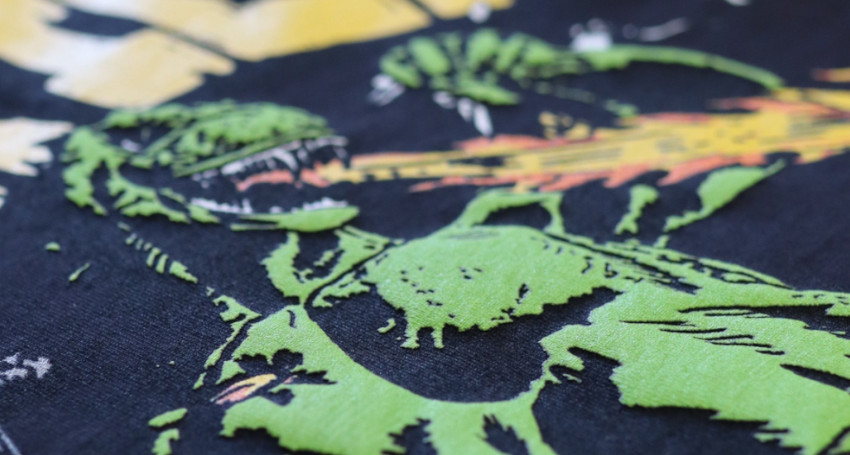
Plastisol Transfers: Worth Considering?
Plastisol transfers, a form of heat transfer printing, are an essential method in the screen printing industry. This technique involves printing a graphic design onto heat transfer paper using plastisol inks, a process similar to digital printing. The design is then transferred onto a garment using heat, resulting in a high-quality, vibrant, and durable print. The durability of plastisol transfers surpasses that of other methods like direct to garment printing, offering prints that can withstand multiple washes without fading or cracking. Versatility is another notable attribute of plastisol transfers. They are compatible with a diverse range of fabrics, including cotton and polyester. This versatility allows businesses to offer a wide range of products, similar to the flexibility provided by digital printing methods. The process is also relatively quick, akin to the efficiency of vinyl cut printing, making it an excellent choice for large-scale production. However, plastisol transfers do have limitations. They may not be ideal for highly detailed logo designs, as capturing intricate details might be challenging. Also, the cost factor is a consideration. Plastisol transfers tend to be more expensive than other printing methods like block print, a potential drawback for businesses operating on a tight budget. Despite these limitations, plastisol transfers remain a popular choice due to their durability, versatility, and the high-quality prints they produce.

CAD Heat Transfer Vinyl Printing: What to Know
CAD heat transfer vinyl printing, a type of vinyl cut printing, involves cutting out designs from a special vinyl material and then applying them to a garment using heat. This method is known for its precision, rivaling the accuracy of digital printing. It is particularly suitable for single-color logo designs, which can be cut and applied with a high degree of accuracy. The durability of CAD heat transfer vinyl prints is another significant benefit. These prints can withstand regular wear and tear, much like dye sublimation prints. The process is also relatively quick, an advantage for businesses that need to produce large quantities of custom products in a short period, similar to the efficiency of screen printing. However, there are some considerations to bear in mind when using CAD heat transfer vinyl printing. The process can be labor-intensive as each design must be cut out individually, potentially slowing down the production process. Furthermore, while the method is suitable for single-color designs, creating multi-color designs can be challenging, unlike dye sublimation or direct to garment printing methods. Despite these challenges, the precision, durability, and speed of CAD heat transfer vinyl printing make it a popular choice in the apparel decoration industry.

Embroidery: A Classic Approach to Shirt Printing
Embroidery, a traditional method of apparel decoration, involves stitching graphic designs directly onto the fabric. This technique is known for its high perceived value. Embroidered designs often look more professional and high-quality than printed designs, enhancing the perceived value of a product, much like a well-executed logo design. The durability of embroidery is another significant benefit. Unlike some printing methods like direct to garment printing, which can fade or peel over time, embroidered designs are stitched directly into the fabric. This ensures they will last for the lifetime of the garment, making embroidery an excellent choice for items that will be subjected to heavy use or frequent washing. However, there are some limitations to embroidery. The process is more time-consuming than most printing methods like screen printing or digital printing, which could potentially increase production times. Additionally, embroidery can be more expensive than other decoration methods, particularly for complex or large designs. Despite these potential drawbacks, the high-quality finish and durability of embroidery make it a worthwhile consideration for businesses looking for a classic, high-quality approach to shirt printing.
Choosing the Perfect T-Shirt Printing Method
T-shirt printing is a thriving business, and its success is largely dependent on the selection of the appropriate printing method. The choice of printing method is influenced by various factors such as the design, the fabric, and the quantity of shirts to be printed. The most prevalent methods are screen printing, direct-to-garment (DTG) printing, and heat transfer printing. Screen printing is ideal for large orders with simple designs, while direct to garment printing is best suited for intricate and multicolored designs. Heat transfer printing, on the other hand, is suitable for small orders and personalized shirts. Each printing method has its advantages and disadvantages. Screen printing, for instance, is cost-effective for large orders but not for small ones due to the high setup cost. Direct to garment printing offers excellent print quality but is slow and expensive, making it unsuitable for large orders. Heat transfer printing allows for full-color prints and quick turnaround time but may compromise the durability of the print. Understanding the specifics of each method is crucial to make an informed decision. Factors such as the type of fabric, the complexity of the design, and the required durability of the print all play a role in determining the most suitable method. For instance, heat transfer printing works best on cotton and cotton blend fabrics, while screen printing and direct to garment printing can be used on a variety of fabrics.

Key Factors to Consider When Selecting a Printing Method
The selection of a t-shirt printing method is a critical decision that can significantly impact the quality and profitability of your business. Several key factors should be considered in this process. Firstly, the design complexity plays a significant role in the choice of printing method. Simple, one-color designs are best suited for screen printing, while complex, multi-color designs require direct to garment printing or heat transfer printing. Secondly, the quantity of shirts to be printed also influences the choice of printing method. Screen printing is most cost-effective for large orders due to the high setup cost, while heat transfer and direct to garment printing are more suitable for small orders. Thirdly, the fabric type and color can affect the print quality and durability, influencing the choice of printing method. Finally, the turnaround time and cost are also important considerations. Screen printing and heat transfer offer quick turnaround times, while direct to garment printing is slower. However, direct to garment printing and heat transfer might be more expensive than screen printing, particularly for large orders.
Balancing Cost and Production Speed: What’s More Important?
The balance between cost and production speed is a critical factor in the selection of a t-shirt printing method. While cost is a significant consideration, particularly for startups and small businesses, production speed cannot be overlooked, especially when dealing with large orders or tight deadlines. Screen printing offers a low cost per unit for large orders but requires a significant setup time, which can slow down production. On the other hand, direct to garment printing and heat transfer provide faster setup times but may have higher costs, particularly for large orders. Ultimately, the choice between cost and production speed depends on the specific needs and circumstances of your business. If you have a large order and sufficient lead time, screen printing may be the most cost-effective option. However, if you need to fulfill a small order quickly, direct to garment printing or heat transfer may be more suitable. It’s essential to carefully evaluate your business needs and choose the method that offers the best balance between cost and production speed.

How Does Fabric Type Influence Your Choice?
Fabric type significantly influences the choice of printing method, impacting the final product’s quality and appeal. Cotton, a popular fabric for screen printing, offers comfort and breathability, ideal for casual wear. However, designs requiring durability might opt for synthetic fabrics like polyester or nylon, suitable for digital printing or dye sublimation. These materials offer resilience and flexibility, crucial for designs demanding elasticity. Additionally, fabric choice can affect the logo design and graphic design process. Natural fabrics like cotton provide a smooth surface, ideal for intricate designs like embroidery or block print. On the other hand, synthetic materials, with their resistance to environmental factors, are more suited for methods like vinyl cut printing, which require durability. In the realm of garment decor, understanding the compatibility of different fabrics with various printing techniques is essential. For instance, while cotton works well with screen printing, polyester is more suited for dye sublimation. Therefore, the fabric type can significantly influence the choice of printing method and the overall success of the design project.
What are each printing method’s initial setup costs and ongoing expenses?
Initial setup costs and ongoing expenses vary across printing methods. Screen printing, for instance, requires a significant initial investment in equipment such as setting up the screens and materials at the outset. However, it offers efficiency for large-scale production, offsetting initial costs over time. This method is ideal for designs requiring multiple colors, such as logo design or graphic design projects.
Contrastingly, digital printing methods like Direct-to-Garment (DTG) printing have lower initial setup costs as they eliminate the need for physical screens or plates. However, the cost per unit can be higher than screen printing, particularly for large orders. The ongoing expenses for maintenance, ink, and other consumables can also add up over time. Heat transfer printing and dye sublimation also have relatively low setup costs, but their ongoing expenses can be high due to the cost of transfer paper and ink. Moreover, the durability of heat transfer prints can be lower than other methods, potentially leading to additional costs in the long run. Therefore, considering both the initial setup costs and ongoing expenses is crucial when choosing a printing method.
Maximizing Your Printing Experience with Garment Decor
Garment decor offers methods like screen printing, digital printing, and embroidery which are an effective way to enhance product appeal. Maximizing the printing experience requires understanding different printing methods and their advantages and limitations. Careful planning and execution are needed to ensure the final product meets expectations and delivers value to customers. Choosing the right printing method is crucial in maximizing the printing experience. This decision should consider several factors, including fabric type, design complexity, production volume, and budget. Each printing method, be it screen printing, digital printing, Direct-to-Garment (DTG) printing, heat transfer printing, or dye sublimation, has its strengths and weaknesses. Using high-quality materials is another critical factor. High-quality fabrics and inks can significantly enhance the durability and appeal of designs. Moreover, proper maintenance of printing equipment is essential for consistent performance and minimizing downtime. Working with experienced professionals can also enhance the printing experience. They can provide valuable insights and guidance throughout the process, helping achieve the best results. Furthermore, they can help navigate any challenges that may arise, ensuring a smooth and successful project.
Getting Started with Garment Decor
Getting started with garment decor involves several steps, starting with the design process. This involves creating a unique and appealing design that resonates with the target audience, you can contact us to help with that! It also requires careful consideration of the color scheme, as the choice of colors can significantly impact the final product’s appeal and visibility. Choosing the right fabric and printing method is the next step. The fabric should be suitable for the design and the intended use of the garment. The printing method should be compatible with the fabric and capable of producing high-quality prints. These decisions should consider various factors, including the design requirements, production volume, budget, and target audience’s preferences. The actual printing process is the next step. This involves preparing the fabric, applying the design, and curing the print to ensure its durability. Following the correct procedures and using the right equipment is crucial for achieving the best results. Finally, the printed garments should be inspected for quality and packaged appropriately for distribution. This ensures that the final product meets the quality standards and delivers value to the customers. In conclusion, getting started with garment decor requires careful planning and execution. However, with the right approach, it can be a rewarding experience that offers significant potential for creativity and innovation.
Choosing the Right Product for Your Design
Selecting the appropriate product for your design is a critical process in the realm of screen printing, digital printing, and direct to garment printing. This decision-making process involves a detailed analysis of all available options, such as heat transfer printing, dye sublimation, vinyl cut printing, and embroidery. Each of these options offers unique features, benefits, and potential limitations, which must be carefully considered to ensure the success of your design project. In the context of block print and logo design, the product selection process is not a one-size-fits-all approach. It demands a deep understanding of the product’s functionality, its compatibility with the design, and its ability to meet the specific requirements of the project. The right product for your design could be one that offers superior quality, exceptional performance, or innovative features, such as those found in advanced digital printing or dye sublimation technologies. Furthermore, in the field of graphic design, the importance of choosing the right product, whether it is for screen printing, digital printing, or any other printing method, cannot be overstated. The product you select will directly impact the functionality, aesthetics, and overall success of your design. Therefore, it is crucial to make an informed decision, taking into account all relevant factors, such as the product’s specifications, its compatibility with other components, its ease of use, and its potential to enhance the overall design.
Taking the Next Step: Connecting Our Team
As we move forward with our screen printing, digital printing, and direct to garment printing projects, it is essential to establish a strong connection among our team members. This step is crucial in fostering a collaborative environment where ideas about heat transfer printing, dye sublimation, vinyl cut printing, and embroidery can be freely exchanged, problems can be quickly addressed, and solutions can be effectively implemented. Building a strong team connection involves open communication about block print and logo design, mutual respect for each team member’s expertise in screen printing, digital printing, and other printing methods, and shared responsibility for the success of our graphic design projects. It requires each team member to actively participate in discussions, contribute their unique skills and expertise, and take ownership of their role in the project. Connecting our team also involves harnessing the power of technology in the realm of screen printing, digital printing, and direct to garment printing. By utilizing collaborative tools and platforms, we can streamline our communication, improve our productivity, and enhance our efficiency. These tools can facilitate real-time communication about heat transfer printing, dye sublimation, vinyl cut printing, and embroidery, enable the sharing of resources, and provide a centralized platform for managing our block print and logo design projects.

